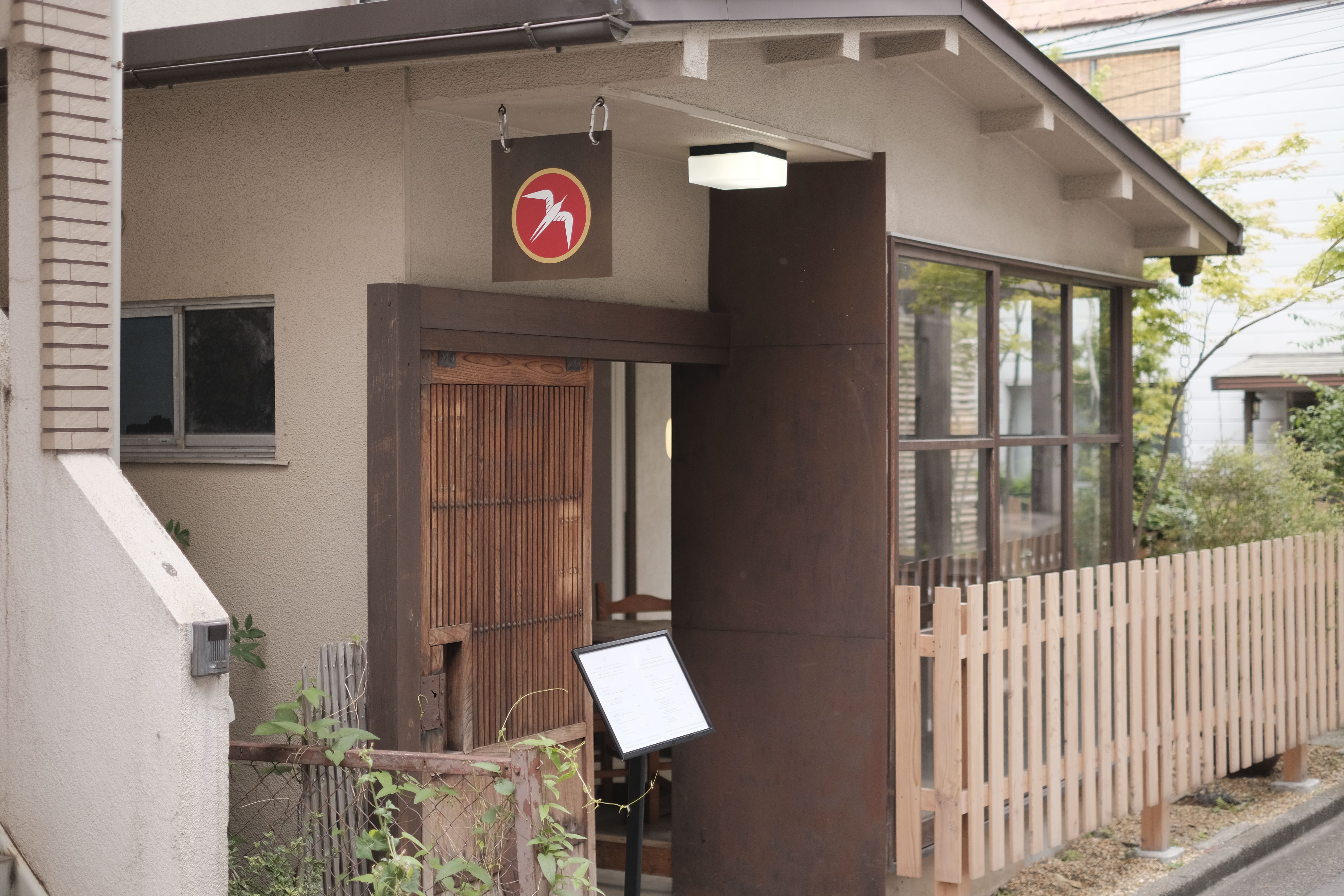Fuglen opened its first shop in Tokyo’s Shibuya district in 2012. By fusing Norwegian vintage furniture design with coffee, it managed to create a distinctive identity and quickly became one of the most popular cafés in the city. On our last day in Japan, we decided to pay them a visit.
Today, Fuglen has five shops in Tokyo alone, including a roastery that roasts beans for other Fuglen shops across Asia: one in Fukuoka, one in Seoul, and one in Jakarta. Out of the five shops, we chose the Sangubashi (参宮橋) location.
Tucked away in the quiet Sangubashi neighbourhood, close to the famous Meiji Shrine, the shop looked like a regular wooden house from a distance. Entering through the wooden sliding front door, we stepped into the genkan (玄関), the entryway area. In front of us was a door leading to the inner room. A round table on the right formed a quiet waiting area, where one could sit and look out through large glass windows into a small yet carefully tended garden.



We were greeted by a barista standing at the entryway, pointing to a menu. As the latest addition to the Fuglen chain, the Sangubashi shop celebrates a unique concept: 磨く (migaku, meaning “to polish” or “to refine” in Japanese), translated as “refinement.” On the menu, one can choose between a three-drink course and a two-drink course—the idea being that the same beans are brewed in different ways to give a deeper understanding of the coffee. One can also opt for a single hand-drip coffee, but it is not possible to order coffee in the same way as at a regular shop. There were also some traditional Japanese snacks available.
Menu All coffee is ground on Weber hand grinders


We chose a two-coffee course and a single hand-drip coffee and were led into the inner room. A large rectangular bar table with a stone surface occupied the centre of the space, where eight guests could sit on one side, facing the baristas on the other. The interior was minimalistic and designed in a “Norwegian mountain lodging” style, using generous amounts of natural materials such as wood, stone, and clay. The lighting inside was deliberately dimmed to create a sense of cosiness. The sharp natural light from outside, however, was softened into a haze by the frosted glass window panes, adding a meditative touch to the atmosphere.
Dango



The first drink from the two-course menu came as a hand-drip brewed with Honduran beans. It was served alongside the Colombian hand-drip coffee we had ordered separately. Both were excellent: the Honduran one was clearer and more balanced, whereas the Colombian had a stronger plum note—slightly spicier and more acidic. We could taste so many flavours in the beans, partly because they were hand-ground and then sifted “more than a hundred times”, our barista explained, pointing to a large Weber hand grinder on the table. While using the same selected beans that can be found in other Fuglen shops, “coffee here is made in a more attentive and time-consuming way,” he added.
Kokekaffe

The second drink, brewed with the same Honduran beans, was where the real fun began. The barista brought out a camping gas stove along with a steel pot and began preparing hiking coffee (kokekaffe/turkaffe in Norwegian). Hiking coffee is an old Norwegian tradition often made while camping or hiking in the open air.
The coffee from the steel pot was then poured through filters into a clay-coloured ceramic pot and served in a ceramic cup. But these were no ordinary coffee sets. They were Hoshino-yaki (星野焼) ceramic, handmade in a special “sunset” (夕日焼, Yuhi-yaki) style by the renowned ceramic artist Genta Yamamoto (山本源太). These “sunset” ceramic wares were originally used as tea sets, and they are named for the way light reflects off the interior water surface—evoking the soft, gentle hues of a sunset.
Knekkebrød with brown cheese


To complete the Norwegian experience, two crackers topped with slices of Norwegian brown goat cheese (Brunost)—one of Norway’s national symbols—were served alongside the coffee. Thanks to the full-immersion brewing process, the hiking coffee had a more robust flavour than the hand-drip, revealing a more complex structure underneath. Admittedly, for someone coming from Oslo, seeing Tine Brunost elevated to such a ceremonial “gourmet” level was somewhat comical. Yet the attentiveness of the staff and the creativity of the experience made it unforgettable.
On our way out, the baristas escorted us through the garden and sent us off with a “tusen takk” and a bow. For many Norwegians travelling in Asia, Fuglen is a sort of home away from home. There are perhaps only a handful of places outside of Norway that celebrate Norwegian handcraft tradition and serve Brunost and Norwegian waffles with such pride—the difference being that, here at the Sangubashi shop, they did it with grand elegance and outstanding style.
